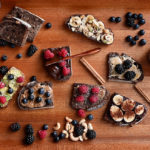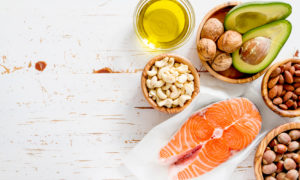Estimated reading time: 3 minute(s)
All of us probably know someone who has Celiac’s disease or someone who doesn’t feel very well after eating gluten. However, many people might not know exactly what gluten is and how many products it’s actually in. Also, many people aren’t aware of the difference between suffering from Celiac’s disease and being intolerant. Although the premise is similar they aren’t exactly the same.
So, What Are We Talking About When We Talk About Gluten?
Gluten is a protein that is found in many grains, some of which are wheat, barley, and rye. In the case of wheat, the concentration of gluten is very high, it makes up around 80% of its total grain protein. People who don’t feel well after eating gluten are unable to digest the protein completely. For example, after eating something with high-wheat content the immune system activates and attaches to the protein fragments that are generated.
Thus, the body’s defenses react to the remains of the gluten protein, detecting them as something toxic, and that is when the body triggers a response to attack them. However, this isn’t always the reaction. There are people with Celiac disease from a young age who often go undiagnosed until they’re adults when many of its symptoms like diarrhea, weight loss, or bloating are already heavily present. The most dangerous reaction that the gluten causes in people with Celiac disease is the damage to the intestinal barrier, the affectation to the intestinal villi, and the presence of inflammatory cells. The consequences of which are: severe nutritional deficiencies and a lot of discomfort.
For people who are gluten intolerant, the process is a bit different and it’s more common than Celiac disease. In this case, the body also reacts poorly to gluten but in a less aggressive way. These people are better off with a diet that restricts gluten intake, however their digestive system isn’t damaged when they don’t. Meaning, they may experience discomfort, bloating or dizziness at that moment… People with Celiac disease need a strict no gluten diet, whereas people who are gluten intolerant need a somewhat restrictive diet.
My Own Experience Living Gluten-Free
When you realize that some foods are bad for you, especially when you’ve been diagnosed, you start to pay closer attention to nutritional labels and the basics about what goes in your food. And, that’s the moment you see the “gluten empire”. Not only because it’s the basis of many grains and the current food pyramid mistakenly has carbohydrates as the foundation to a healthy diet, but also because the protein-gluten provides elasticity to doughs, and makes breads and cakes spongy thanks to its thickening power.

Wheat, rye, barley, spelt, and some varieties of oats contain gluten. If we think about the foods that the majority of the population eat on a daily basis, we see that yes, they have gluten.
- Pasta
- Bread
- Pizza
- Cookies, including whole wheat
- Muffins
- Cake
- Cupcakes
- Breakfast Bars and Cereal
- Whole-grain biscuits
- Jarred/Canned, Sauces/ Broths and Soups
- Bread crumbs
- Frozen Fish or pre-made breaded dishes
- Potato chips/ Crisps and other snacks
- Soy
- Rice (check that there has been no cross-contamination)
As you can see, when we start to pay attention, especially after a diagnosis we find that many foods contain gluten even ones we didn’t expect like sauces and snacks. On the bright side, that’s when the process of eating healthy begins. Once you’ve recognized that many refined sugars and flours are present in your foods you begin to prepare more homemade meals without so much sugar or sweeteners and other harmful chemicals. This trickles down into other parts of life as well, when you start to eat better, you start to care more about doing sports and other physical activities which triggers a better overall well being.
Drawing from my own experience I’ve lived gluten-free since I was diagnosed with Celiac disease as a child. Back then there weren’t a lot of gluten-free alternatives as there are today, so at a young age, I began to experiment in the kitchen and learn what worked for my body. I was very lucky to have a mother and grandmother who were very passionate about cooking so I was able to learn first hand. This interest in cooking and nutrition increasingly grew over the years which then led me to study Nutrition and start to create my own recipes.
Of course in my case, I don’t eat gluten out of necessity but, I do believe that there is an over-consumption of gluten today. The transition to a healthier and gluten-free diet leads to a reduction of carbohydrate intake and this has a fantastic positive effect on our bodies. Even though the food industry has told us that we need carbohydrates and they should form the foundation of our diet, this is just one big lie. Only natural fats are basic micronutrients for our bodies. Carbohydrates only cause spikes in blood glucose levels and give us short-lived energy. Foods like, pasta, rice, industrial cereal, or bread made with wheat should be cut out of our diet.
How To Live Gluten-Free
It’s a question of habits. We have to relearn about food and look at diets like the Paleo one which teaches us the fundamentals of food. Preparing homemade foods like bread or jam is very easy, and allows us to control what kind of flour we use and allows us to limit white sugar intake which is poisonous to our health. Nuts and seeds are an important part of our diet that give us longer-lasting energy and satisfy us for longer. Which also happens with both animal and vegetable fats.

Oatmeal is also a great product for those of us with Celiac disease. It turns into the base of many meals for breakfast, oatmeal together with nuts makes it possible to still have delicious sponge cakes, muffins, and cakes. Be careful though because oats are not always gluten-free since they can be contaminated in the treatment process. You must certify that it is gluten-free by the label.
If you’re not sure how to make some gluten-free meals, then take a look at this list of recipes we put together:
Tumeric & Seed Bread
Sandwich Bread
Carrot Pancakes
Sweet Potato & Carrot Pizza
Salmorejo Without Bread
Pizza with Almond and Quinoa dough
Blueberry Muffins
Parmesan & Seed Toast
Asian-Style Cauliflower Rice
Zucchini Tagliatelle with Cashew Sauce
Sugar-Free Granola with nuts
Oatmeal, Banana and lemon Cookies











